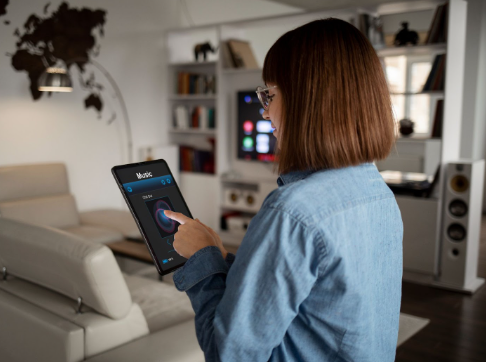
Voice recognition technologies are maturing and entering a new generation of IoT devices, promising to further revolutionize the connected home.
The first voice recognition systems, developed in the early 1950s, could only interpret numbers. It wasn’t until several decades later, by 2018, that voice recognition technology achieved significant precision, expanding to a variety of industries and connected devices.
In fact, he pandemic accelerated the need to rethink how users interact with devices, favoring contactless systems. Additionally, customer experience significantly improves when incorporating voice commands.
Estimates suggest there will be 8 billion digital voice assistants in use by 2023, compared to the 2.5 billion estimated by the end of 2018. The market is projected to reach $31.82 billion by 2025.
Industries of all types are integrating IoT capabilities with voice recognition technology to meet changing users´ demands, improve processes, and provide added value.
The connected home is one of the areas benefiting most from voice technologies. A smart home ecosystem allows for remote access and real-time monitoring of devices. Voice-enabled control systems are taking smart home automation to the next level. Devices like Amazon Echo, Google Nest, and Samsung SmartThings allow users to use simple voice commands to manage connected devices, from lights and appliances to climate control and locks, all from a single interface.
Voice assistants are becoming increasingly intelligent thanks to a combination of technological advancements: the evolution of natural language processing, which enables feeling analysis and general context understanding; improvements in artificial intelligence and machine learning, which drive personalized experiences; and the growing ubiquity of voice-controlled IoT devices.
These voice-command devices are rapidly evolving, for example, to perceive more than just preferences and tastes. Google and Amazon are aiming to integrate voice-enabled artificial intelligence capable of analyzing and responding to human emotions. Although the full extent of how this will manifest is still unclear, the foundation of this project lies in the ability of these devices to identify and adapt to a user’s motivations and concerns, much like the revolutionary interaction the main character in the movie Her has with OS1, an operating system designed to adapt and evolve like a human being. It performs all communications through voice commands and soon transitions from being merely a voice assistant to becoming the protagonist’s love interest.”
The second generation of acoustic recognition systems for smart devices might be able to understand the context of what it hears. For example, it could trigger an alarm upon detecting the sound of breaking glass or wake parents upon hearing a baby’s cry during the night. This development will open up a significant market potential for new applications and uses. Combining the capture of new types of data with higher levels of machine learning will be key to these future advancements.
Julio Cesar Blanco – April 3, 2023


